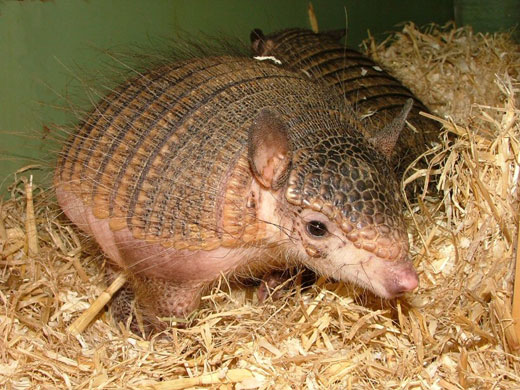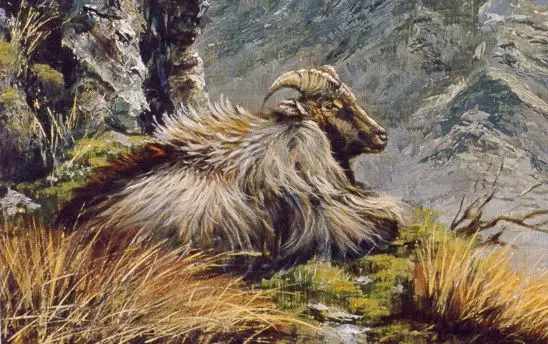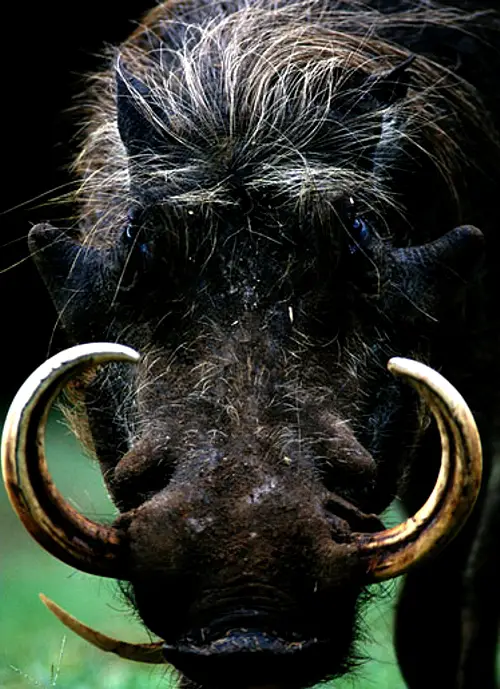Hairy Armadillo
The Hairy Armadillo, Native to Bolivia, Chile, Argentian and Uruguay, lives in grasslands, plains and steppelike areas and is an omnivore. It is also known as the Screaming Hairy Armadillo for the loud scream like squeal that it makes.
This, one of the smaller armadillos, has a section on its head, a smaller narrow strip on the neck, between its ears and what is called a carapace, that covers and protects its entire body with the armor like bony structure.
The Carapace has eighteen strips, with eight of them being able to move, while the others are bound to each other and are immobile.

Hairy Armadillo
The underside of its body is covered with very long bristly hair which gives it its name.
The hairy armadillo grows to about eleven inches long in just the body aspect, with another four inches for its tail. It is small for an armadillo growing to weigh only about three to seven pounds.
The Hairy Armadillo has claws that are long and hard, with which it can dig into the ground in very short order.
When a predator attempts to pull the armadillo out of its burrow in the ground, it will anchor itself using those same claws, bracing its feet against the wall or its armor against the sides of the burrow entrance.
When chased on open ground, if it is not able to take refuge in a burrow, it will draw in its legs and roll, surrounding itself with its armor and rest its body on the ground.
This means of protection offers little way for a predator to access it, since the armor is incredibly hard bone and can stand up to a great deal of pressure.
The Armadillo is very solitary, except when mating, which takes place in autumn.
The mating, with a gestation period that may last between 60 and 75 days will produce one to four infants normally. It usually produces two litters with both females and males becoming sexually mature after 9 months.
A baby of a screaming hairy armadillo is called a ‘pup’. The females are called ‘zed’ and males ‘lister’.
The armadillo is nocturnal, active at night, when the heat of its environment is lessened, when it will feed on insects, snakes, smaller mammals and some plant



